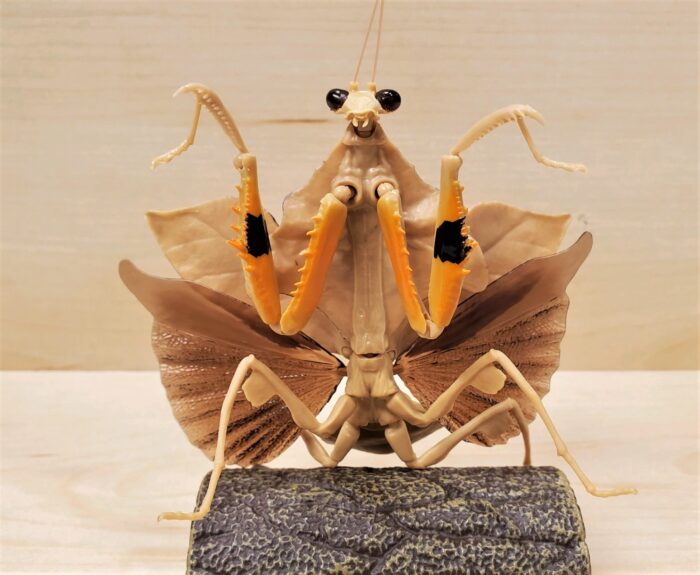Earlier this year I reviewed a pair of Japanese giant mantids (Tenodera aridifolia) from Bandai’s Diversity of Life on Earth Line. In October of this year, the second volume in the mantid series was released. As the name of the set suggests, there were two more figures of T.
Author: bmathison1972
 I am Blaine, known by bmathison1972 on the forums and blogs. I am a professional parasitologist specializing in agents of human disease, including medically-important arthropods. I am also an amateur entomologist and study Nearctic click beetles (family Elateridae). Historically, much of my collection was devoted to insects and other arthropods, but in late 2018 I started building a Synoptic Collection of other species, to have one good exemplar of any animal species (my personal ‘Natural History Museum’). Other hobbies include hiking, bird-watching, running, and lifting weights, but my other ‘big’ hobby is visiting sports arenas, especially baseball stadiums. Whenever I travel for work (which I do with some frequency), I always check to see if there is a local college, independent, minor, or major league team to see.
I am Blaine, known by bmathison1972 on the forums and blogs. I am a professional parasitologist specializing in agents of human disease, including medically-important arthropods. I am also an amateur entomologist and study Nearctic click beetles (family Elateridae). Historically, much of my collection was devoted to insects and other arthropods, but in late 2018 I started building a Synoptic Collection of other species, to have one good exemplar of any animal species (my personal ‘Natural History Museum’). Other hobbies include hiking, bird-watching, running, and lifting weights, but my other ‘big’ hobby is visiting sports arenas, especially baseball stadiums. Whenever I travel for work (which I do with some frequency), I always check to see if there is a local college, independent, minor, or major league team to see.All reviews by this author
Tropical Fish (Play Visions)
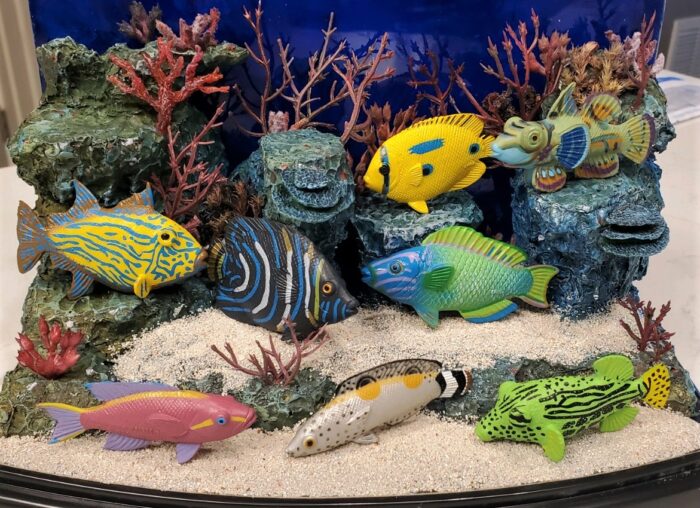
With recent discussions on the STS forum on the identity of Play Visions’ Tropical Fish collection from 1996, I was inspired to review the set on the Blog! These figures are all marked with very generic common names, and the species-level identifications are all community-based. If anyone can offer up better identifications, let us know, we’d love to hear from you!
Giant Clam (Shellfish with a Lid Mascot Vol. 3 by Toys Spirits)

Right about the time I decided the review the Cadbury Yowie giant clam a couple weeks ago, Toy Spirits (a subsidiary of SO-TA, or vice versa) decided to produce one in the third volume of their Shellfish with a Lid Mascot series. The figure was not marketed at the species level, but I bought it hoping I could confidentially identify it as something different than the Cadbury figure which was specifically marketed as Tridacna maxima.
Flying Peacock Spider (Diversity of Life on Earth: Peacock Spiders by Bandai)
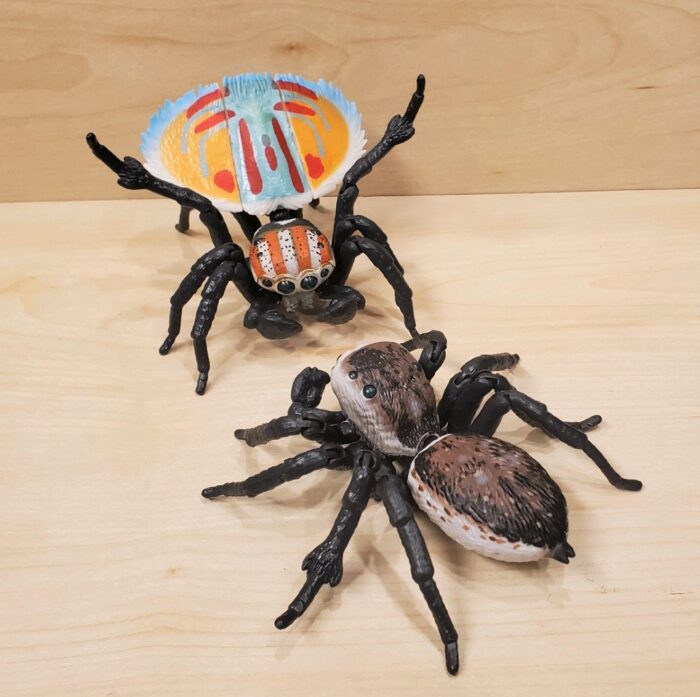
The genus Maratus, commonly referred to as peacock spiders, consists of over 80 species, all endemic to Australia. One must wonder how a single genus of spiders could speciate to this magnitude on a single geographic land mass (although there are some on Tasmania). The answer lies in their courtship rituals.
Giant Clam (Yowies Series 4 by Cadbury)

The genus Tridacna consists of large marine bivalves commonly known as giant clams. The largest, T. gigas, can be 120 cm across, weigh over 200 kg, and live for over 100 years. Today we will be looking at T. maxima, which is known as the maxima clam (although it also goes by the oxymoron ‘small giant clam’).
Rusty Patched Bumble Bee (Animals with Superpowers by Yowie Group)
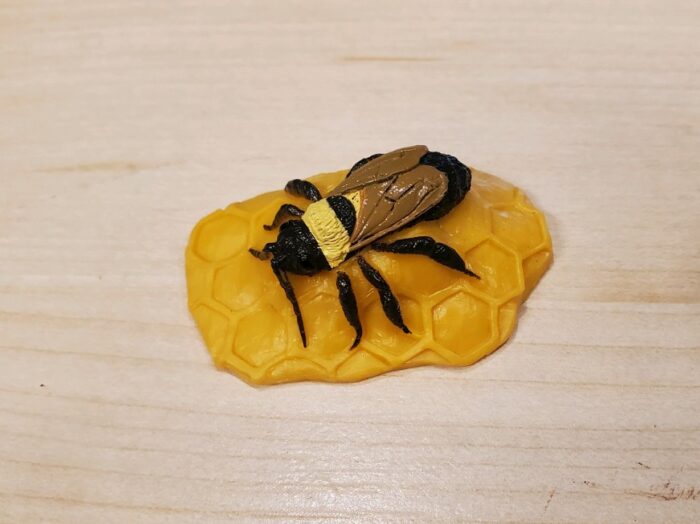
Bumble bees are not uncommon in the toy realm, usually as ‘generic bees’ in bin-style sets. Some have been made by major manufacturers, including Bullyland, CollectA, and Safari Ltd., but none of those are identified at the species level. To my knowledge, there are only two figures of bumble bees attributable to the species level, the golden northern bumble bee (Bombus fervidus) by Play Visions in 1996 and the rusty patched bumble bee (B.
Black Widow (Fun World by Easter Unlimited, Inc.)

For my final Halloween post, I am reviewing a figure that was specifically sold as a Halloween novelty toy! I am referring to the black widow (Latrodectus mactans) by Fun World, which is a Division of Easter Unlimited, Inc., a novelty shop that sells seasonal and holiday-themed toys, décor, and costumes.
Castor Bean Tick (3B Scientific)
Killer Bee (Insect Predators by Trendmasters)

Today is my second contribution to the ongoing October theme of presenting ‘creepy and scary’ critters on the Blog. Today I will be reviewing the ‘killer bee’ (Apis mellifera) by Trendmasters. It was released in 1993 as part of their Insect Predators collection. The collection also included a scorpion (unidentified, but presumably the emperor scorpion, Pandinus imperator), the giant stag beetle (Lucanus elaphas), a wasp (Bembix americana), a mosquito (Aedes taeniorhynchus), and the Carolina mantis (Stagmomantis carolina).
Brain-eating Ameba (Giant Microbes)

Halloween often conjures up images of brain-eating zombies. Well, I am covering the closest thing in nature to that concept, the brain-eating ameba (Naegleria fowleri) by Giant Microbes! I should start off by saying these toys belong to a friend of mine at work (who is also our medical director for parasitology), as I don’t collect plush toys myself.
Carolina Mantis (Insect Predators by Trendmasters)

Collectors of figures and memorabilia from the Godzilla franchise should be familiar with Trendmasters. But did you know they released a series of ‘Insect Predators’ in 1993? Well, they did! The series consisted of a scorpion (unidentified, but presumably the emperor scorpion, Pandinus imperator), the giant stag beetle (Lucanus elaphas), a ‘killer’ bee (Apis mellifera), a wasp (Bembix americana), a mosquito (Aedes taeniorhynchus), and the subject of today’s review, the Carolina mantis (Stagmomantis carolina).
Japanese Black Ant (The Arinko, Volumes 1 & 2 by J. Dream Co. Ltd.)
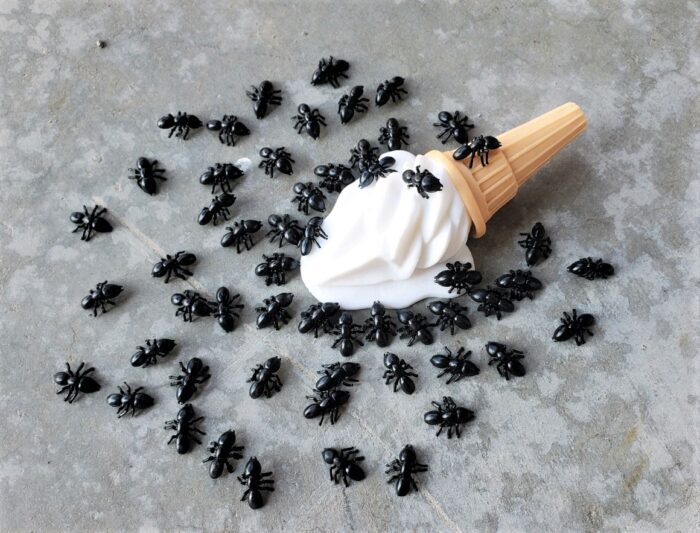
Ladies and gentlemen, uh, we’ve just lost the picture, but what we’ve seen speaks for itself. The Animal Toy Blog has apparently been taken over, ‘conquered’ if you will, by a master race of giant space ants. It’s difficult to tell from this vantage point whether they will consume the blog reviewers or merely enslave us.

